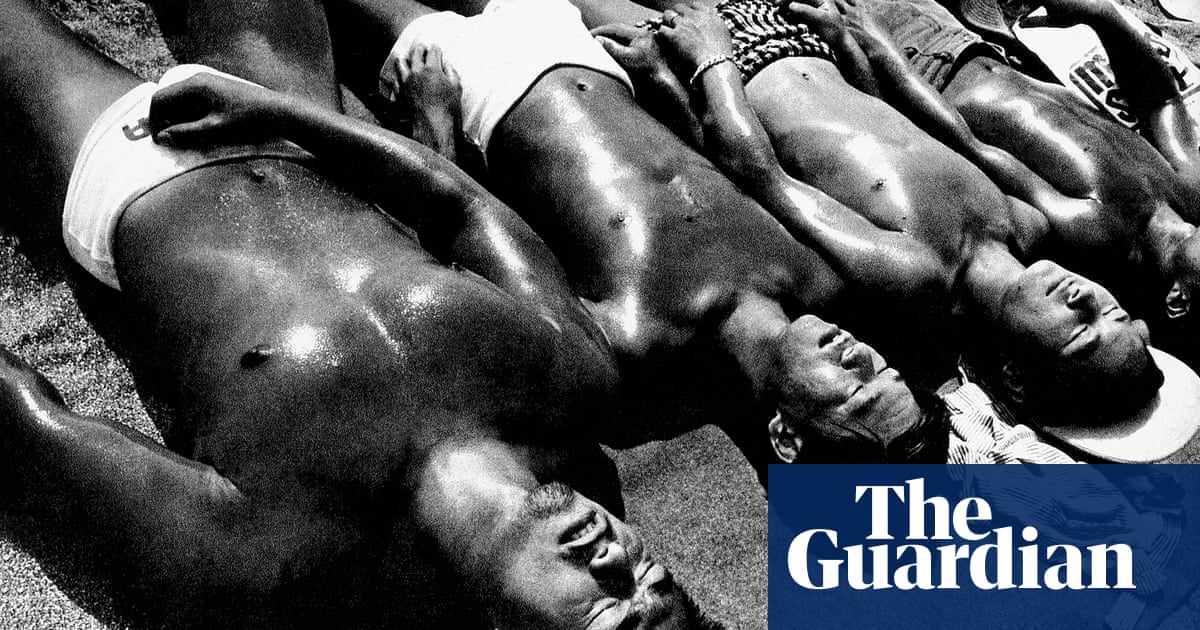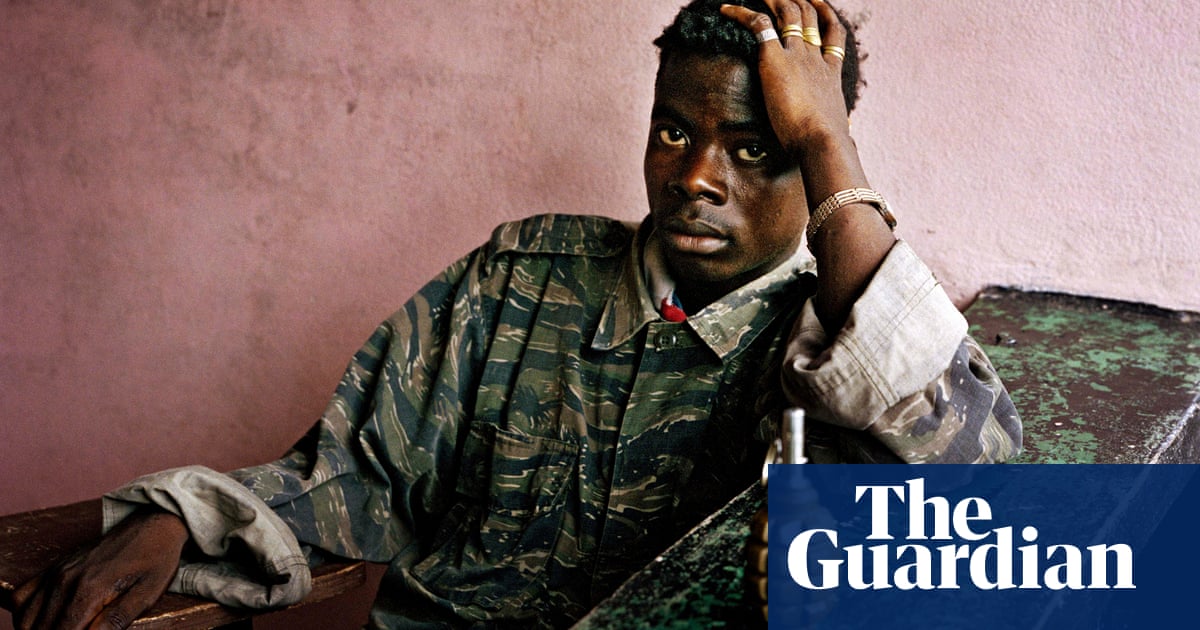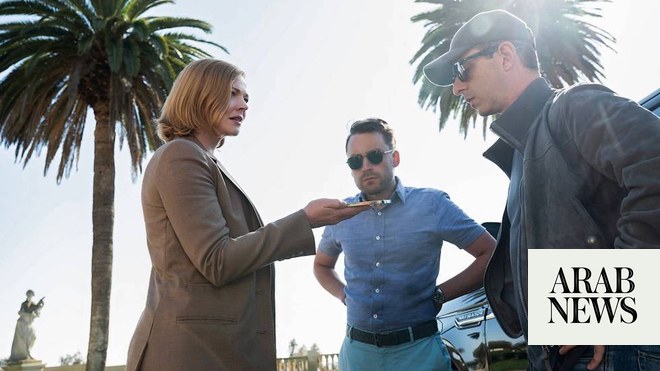
It isn’t easy to get to know Daidō Moriyama. The Japanese photographer, 85, answers my questions from his home in Tokyo via an interpreter, and is quick to bat off personal questions. “Photographers can only take pictures,” he shrugs.
But Moriyama has done far more than take pictures. Although best known as a street photographer, he has pushed the form to its limits, interrogating what photographs are, how they are experienced, their ethics and effect. He is also behind some of the most iconic and influential pictures of the last 50 years – from closeups of fishnet stockings to portraits of stray dogs they are regarded as lyrical, symbolic expressions of the postwar era in Japan.
“He is shy, inconspicuous, and concentrated. He is a real brain – very articulated and well-read, who speaks in elegant, metaphoric ways,” says Thyago Nogueira, the curator of a rare retrospective exhibition at the Photographers’ Gallery that gives an unprecedented view of Moriyama’s dazzling work.
The show has been three years in the making – it is the first time the gallery has devoted its entire space to one artist, taking over four floors. Remarkably, it is also the first time a UK institution has devoted a solo exhibition to Moriyama. “Yes, it is a bit late,” he jokes.
The show is a riveting, rapturous exploration of the enigmatic and prolific photographer, spanning from his earliest works in the late 1960s to today – he continues to go out with his camera, and a cigarette. “Although I have some constraints, including my health, I want to take as many photos as possible each day.”
Photographs are presented in myriad ways: at times completely overwhelming the viewer. There are slideshows on projectors (some more than an hour long), installations of images covering entire walls, magazine and book spreads, and sequences of glorious prints, mostly in black and white, changing in scale. In their various incarnations, with repeated images amounting to a kind of neuroticism, the photographs have a relentless pace. “They are a punch in the stomach,” as Nogueira puts it.
Moving back and forth between decades, the black and white film imbuing the images with a kind of timelessness, Moriyama contests photography as a form rooted in a moment or place. His photographs articulate something else, they palpitate with mystery – the great inexplicable essence of life. Perhaps this is why he is reluctant to speak for the images.
Moriyama was born in Osaka (then Ikeda), Japan, in 1938. “I was raised in a very ordinary way. My father was an office worker, and my mother was a housewife,” he says. His childhood wasn’t easy. Against the backdrop of US occupation and the second world war, home life was punctuated by loss. A twin brother died when Moriyama was two. The family moved often for his father’s work, before his early death. “I did not fit in at school. I lost my father when I was young. But I have always loved to draw so I became a designer through an acquaintance.” He apprenticed at a graphic design studio. His first photographs, he recalls, were of the family dog. In a later series “Memories of a Dog”, Moriyama returned to places of his childhood, to photograph his memories.
In 1961 he moved to Tokyo to pursue a dream of becoming a photojournalist, like his sensei, Shōmei Tōmatsu – Japan’s pre-eminent postwar photographer. “I became a photographer because I found the photographers I worked with very sporty and cool – and I guess I was never cut out for desk work,” Moriyama says wryly.
From early staid, documentary, journalistic-style images, mostly shot at the American base at Yokosuka (some of which are presented at the Photographers’ Gallery’s show) Moriyama’s approach quickly evolved into an expressive, subjective style that evoked his own experience of the world. He was invited to join Provoke – a collective of young photographers determined to revolutionise photography – by Takuma Nakahira, a photographer and critic, who died in 2015. “Takuma Nakahira was then, and still is, my only friend and my only rival.”
Provoke published just three issues of a visual manifesto between 1968 and 1969, but they had a profound effect. Japanese critics ridiculed the group’s lack of technical skills as “are, bure, boke” (“grainy, blurry, out-of-focus”). These terms were later reclaimed to describe the style pioneered by Moriyama. But, he says, “I never consciously shot that way, nor did I care.”
Moriyama set about photographing the world not as it was but as he saw it – a confused, chaotic and fragmented reality. There is a furious urgency to the pictures he took between 1968 and 1972: black and white photographs of everything and nothing, of underground kabuki actors and other avant garde artists and performers, erotic scenes, portraits of animals and street life, photographs of photographs, and of TV screens and newspaper headlines – precursors to screenshots and reels. “I was strongly inspired by William Klein’s books of New York, Moscow, Rome, Tokyo, published when he was still young. It was something in particular that I saw in his photographs that seemed to connect me to my own photography.”
Moriyama’s photographs have become a testament of a tumultuous time in Japan, conveying a sense of the grim and gritty reality of the underbelly of the city in grainy images. “I understood the social atmosphere at that time, but personally I had no interest in politics,” Moriyama reflects. Many of these images were originally shot as photo essays for magazines – it was the golden age of the Tokyo publishing industry, and magazines were museums for photography as it became a new artistic form. The pictures were later printed again, sometimes at different scales, reshuffled and reordered, and compiled into the photobooks Moriyama is famous for – such as his acclaimed work, A Hunter, shot from the window of a car as Moriyama hitchhiked around Japan. “When I am going along the road, snapping the shutter as I read each moment, I become at times a poet, a scientist, a critic, a philosopher, a labourer, or a politician,” he said.
A less familiar, groundbreaking series of work on show at the Photographers’ Gallery is a monthly column Accidents produced throughout 1969 for a mass media publication. Each series took on a different aspect of photography and its exploitation by the mass media – a poster of a car crash designed to shock and scare; photographs of TV screens and newspapers in Japan in the week after JFK’s assassination. It shows Moriyama’s concern with the ethics of photography and its exploitative nature.
But questioning the purpose of photography so deeply led him down a dark road. In 1972 Moriyama published “Farewell Photography”, a swan song to his chosen medium, a mashup of old negatives, scraps and prints gathered from his archives and thrown together. Photography, Moriyama realised, wasn’t going to change the world as he had once believed.
He suffered depression and became addicted to sleeping pills. It was almost a decade before he picked up the camera again, when he was commissioned by two editor friends concerned for his well being. Just as the camera had plunged him into an existential void, it pulled him back from the brink of self-obliteration.
“Moriyama spent his life asking a basic, fundamental question: What is photography?” Nogueira says. “He never answered that question, but his life’s work is a constant and honest response to that.”
Today, Moriyama is humble about his achievements. “I am happy to know that many people around the world have been exposed to my photographs and photo books,” he says. Photographing daily for so many decades, “there is nothing that has not already been taken – each photograph becomes a great cycle. It is connected to the past and to the future – and that is why there is the most reality in the current photograph that captures it.
“Beyond the photographer, the work returns to society – and that is the most powerful force of photography.”
Daidō Moriyama: A Retrospective is at the Photographers’ Gallery, London, until 11 February.












